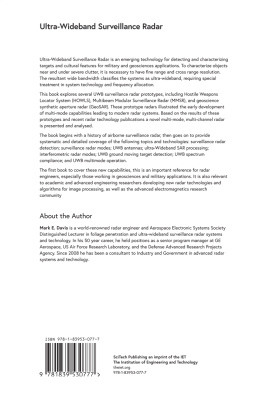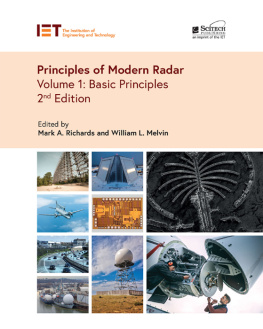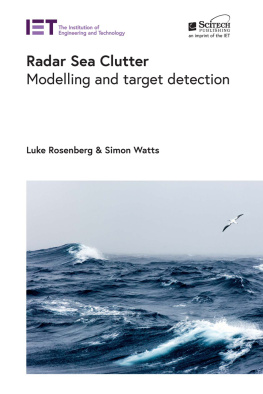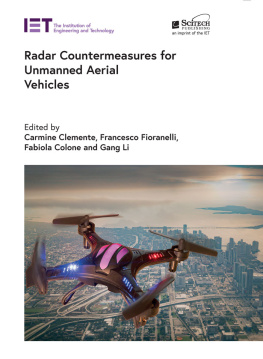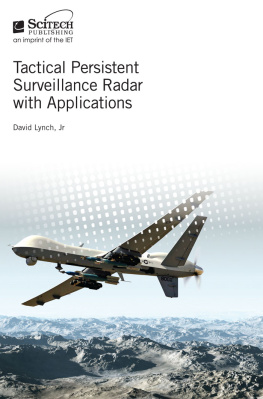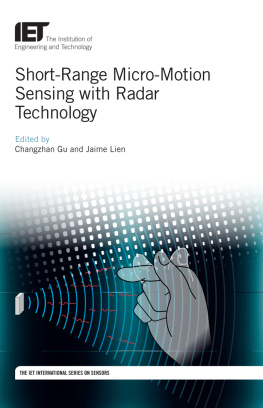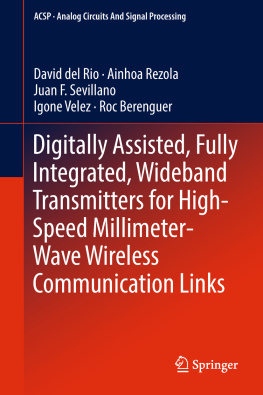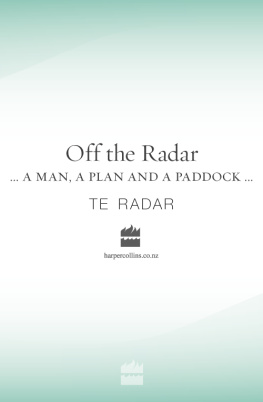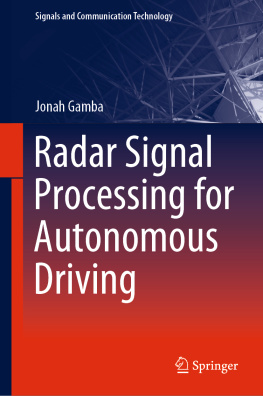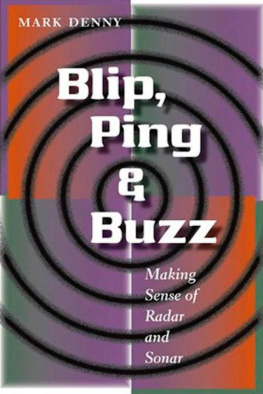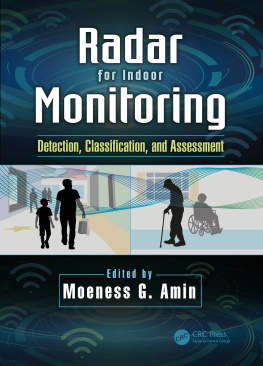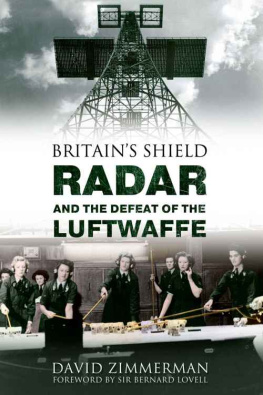Ultra-Wideband Surveillance Radar
Related titles on radar:
Advances in Bistatic Radar Willis and Griffiths
Airborne Early Warning System Concepts, 3rd Edition Long
Bistatic Radar, 2nd Edition Willis
Design of Multi-Frequency CW Radars Jankiraman
Digital Techniques for Wideband Receivers, 2nd Edition Tsui
Electronic Warfare Pocket Guide Adamy
Foliage Penetration Radar: Detection and characterisation of objects under trees Davis
Fundamentals of Ground Radar for ATC Engineers and Technicians Bouwman
Fundamentals of Systems Engineering and Defense Systems Applications Jeffrey
Introduction to Electronic Warfare Modeling and Simulation Adamy
Introduction to Electronic Defense Systems Neri
Introduction to Sensors for Ranging and Imaging Brooker
Microwave Passive Direction Finding Lipsky
Microwave Receivers with Electronic Warfare Applications Tsui
Phased-Array Radar Design: Application of radar fundamentals Jeffrey
Pocket Radar Guide: Key facts, equations, and data Curry
Principles of Modern Radar, Volume 1: Basic principles Richards, Scheer and Holm
Principles of Modern Radar, Volume 2: Advanced techniques Melvin and Scheer
Principles of Modern Radar, Volume 3: Applications Scheer and Melvin
Principles of Waveform Diversity and Design Wicks et al.
Pulse Doppler Radar Alabaster
Radar Cross Section Measurements Knott
Radar Cross Section, 2nd Edition Knott et al.
Radar Design Principles: Signal processing and the environment, 2nd Edition Nathanson et al.
Radar Detection DiFranco and Rubin
Radar Essentials: A concise handbook for radar design and performance Curry
Radar Foundations for Imaging and Advanced Concepts Sullivan
Radar Principles for the Non-Specialist, 3rd Edition Toomay and Hannan
Test and Evaluation of Aircraft Avionics and Weapons Systems McShea
Understanding Radar Systems Kingsley and Quegan
Understanding Synthetic Aperture Radar Images Oliver and Quegan
Radar and Electronic Warfare Principles for the Non-specialist, 4th Edition Hannen
Inverse Synthetic Aperture Radar Imaging: Principles, algorithms and applications Chen and Marotella
Stimsons Introduction to Airborne Radar, 3rd Edition Baker, Griffiths and Adamy
Test and Evaluation of Avionics and Weapon Sytems, 2nd Edition McShea
Angle-of-Arrival Estimation Using Radar Interferometry: Methods and applications Holder
Biologically-Inspired Radar and Sonar: Lessons from Nature Balleri, Griffiths and Baker
The Impact of Cognition on Radar Technology Farina, De Maio and Haykin
Novel Radar Techniques and Applications, Volume 1: Real Aperture Array Radar, Imaging Radar, and Passive and Multistatic Radar Klemm, Nickel, Gierull, Lombardo, Griffiths and Koch
Novel Radar Techniques and Applications, Volume 2: Waveform Diversity and Cognitive Radar, and Target Tracking and Data Fusion Klemm, Nickel, Gierull, Lombardo, Griffiths and Koch
Radar and Communication Spectrum Sharing Blunt and Perrins
Systems Engineering for Ethical Autonomous Systems Gillespie
Shadowing Function from Randomly Rough Surfaces: Derivation and applications Bourlier and Li
Photo for Radar Networks and Electronic Warfare Systems Bogoni, Laghezza and Ghelfi
Multidimensional Radar Imaging Martorella
Radar Waveform Design Based on Optimization Theory Cui, De Maio, Farina and Li
Micro-Doppler Radar and its Applications Fioranelli, Griffiths, Ritchie and Balleri
Maritime Surveillance with Synthetic Aperture Radar Di Martino and Antonio Iodice
Electronic Scanned Array Design Williams
Ultra-Wideband Surveillance Radar
Mark E Davis
The Institution of Engineering and Technology
Published by SciTech Publishing, an imprint of The Institution of Engineering and Technology, London, United Kingdom
The Institution of Engineering and Technology is registered as a Charity in England & Wales (no. 211014) and Scotland (no. SC038698).
The Institution of Engineering and Technology 2021
First published 2020
This publication is copyright under the Berne Convention and the Universal Copyright Convention. All rights reserved. Apart from any fair dealing for the purposes of research or private study, or criticism or review, as permitted under the Copyright, Designs and Patents Act 1988, this publication may be reproduced, stored or transmitted, in any form or by any means, only with the prior permission in writing of the publishers, or in the case of reprographic reproduction in accordance with the terms of licences issued by the Copyright Licensing Agency. Enquiries concerning reproduction outside those terms should be sent to the publisher at the undermentioned address:
The Institution of Engineering and Technology
Michael Faraday House
Six Hills Way, Stevenage
Herts, SG1 2AY, United Kingdom
www.theiet.org
While the author and publisher believe that the information and guidance given in this work are correct, all parties must rely upon their own skill and judgement when making use of them. Neither the author nor publisher assumes any liability to anyone for any loss or damage caused by any error or omission in the work, whether such an error or omission is the result of negligence or any other cause. Any and all such liability is disclaimed.
The moral rights of the author to be identified as author of this work have been asserted by him in accordance with the Copyright, Designs and Patents Act 1988.
British Library Cataloguing in Publication Data
A catalogue record for this product is available from the British Library
ISBN 978-1-83953-077-7 (hardback)
ISBN 978-1-83953-078-4 (PDF)
Typeset in India by Exeter Premedia Services
Printed in the UK by CPI Group (UK) Ltd, Croydon
The material in this text has been Publically Released under DISTAR Case 31857 (4 November 2019), Case 32507 (12 November 2019), and Case 32524 (3 March 2020).
Contents
List of figures
List of tables
Preface
Battlefield radars became a major technology thrust in the late 1960s based on several advances in radar technology. The military needed airborne radar systems for all weather, day-night surveillance of an area to protect borders. These requirements have also been extended since 1980 for monitoring areas against trafficking of people and animals, along with assessment of the destruction of earth resources. This has been a very difficult radar system engineering process, due to the need for characterizing the objects and clutter for high confidence surveillance.
Two US radar research organizations have been leaders in new system designs and development of radar signal processing algorithms: MIT Lincoln Laboratory in Lexington, Massachusetts, has focused on the military applications; and NASA Jet Propulsion Laboratory in Pasadena, California, have developed the earth resources and natural disaster monitoring. A third source of radar system concepts and necessary program support has been the US Defense Advanced Research Projects Agency (DARPA) in Arlington, Virginia. Much of the content of this text has been drawn from the authors association with these leaders in the field.

